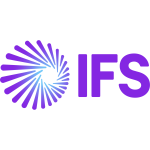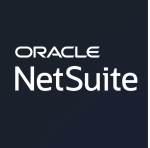What is our primary use case?
Of the majority of projects I was involved in, two of them were for retail. They wanted to use it for the POS. One was a distribution company and one was for the production. They were importing and repacking some goods, FMCG goods, and selling them. The product was used mostly in scenarios of that type.
What is most valuable?
It's good for retail businesses.
It expands a lot and constantly bringing on new features. It's got a lot of competitive features.
The stability is okay.
There's a moderate amount of scalability available.
They've put in asset management, which has been a nice improvement.
What needs improvement?
The solution could be simplified and streamlined a bit.
There should be more clarity and better functionality in the master planning features.
It's not easy to set up.
It would be ideal if the product was priced at a bit less.
The solution in general just needs a few quality improvements.
I'm finding that often on-premises versions are getting left behind and new features more often are getting prioritized for the cloud. It's my understanding that they are doing this to push clients over to the cloud.
For how long have I used the solution?
I've used the solution for four or more years on multiple projects.
Buyer's Guide
Microsoft Dynamics AX
October 2025
Learn what your peers think about Microsoft Dynamics AX. Get advice and tips from experienced pros sharing their opinions. Updated: October 2025.
872,019 professionals have used our research since 2012.
What do I think about the stability of the solution?
The stability is very good for the most part. Business 365 is a better solution on the stability front, however, I can't recall dealing with bugs or glitches and I can't recall it crashing or freezing.
What do I think about the scalability of the solution?
The scalability is okay, however, S4HANA is more scalable than this product. Even with the POS version, if we go above a certain limit, we can have performance issues. The AX is scalable to the mid-level market and mid-level customers.
How are customer service and support?
The technical support from Microsoft is not bad. Normally, they are cooperative people. Normally in these kinds of software companies, they have their roadmap. The support is rather satisfactory. We're happy with them.
Which solution did I use previously and why did I switch?
I have some experience with Microsoft.
The difference between SAP and Microsoft is that, with Microsoft, you have to do more development. In SAP, you do less development. If a company is good with a developer and comfortable with the developer, I would suggest the AX. If they have less IT infrastructure for coding and development, then it might be better to look at something simpler.
How was the initial setup?
It's not easy to set up. You have to see a lot of things, a lot of setups, to get the hang of it. On top of that, often there are a number of items that the company is not using, and you have to put the defaults in place for that. It's not easy to configure.
What's my experience with pricing, setup cost, and licensing?
I don't deal with the licensing or pricing side of things, and therefore can't speak to how much it costs or how often licensing comes due. It is likely mid-level pricing - not the cheapest, and not the most expensive. There are other options for smaller-scale businesses such as NetSuite or SAP Business One that likely cost less.
What other advice do I have?
I work as an implementor and a consultant and I partner with Microsoft and SAP.
In the country I work in, only on-premises solutions are possible. They are not going into cloud solutions at all.
I'd rate the solution an eight out of ten.
If a company has a good development infrastructure, and they have an in-house development team, for smaller software such as SAP Business One and NetSuite, you can go with one developer or fewer developers. However, with AX or Dynamics 365, normally you'd probably be best with three to four developers in-house.
Which deployment model are you using for this solution?
On-premises
Disclosure: My company has a business relationship with this vendor other than being a customer. Implementor














